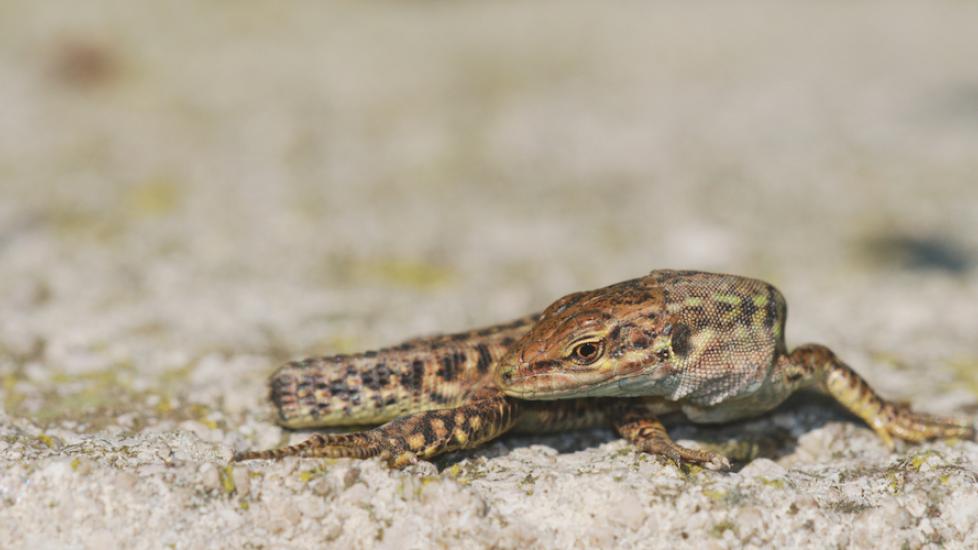Lizard Tail Loss: What To Do
A lizard's tail serves many purposes. The tail helps with balance, movement, and establishing social status through body language. It also acts as a fat storage organ and a defense mechanism against predators.
Many lizards can self-amputate or “drop” their tails, also known as tail autotomy. This is a natural self-defense mechanism that occurs when a lizard is grabbed by a predator or senses a threat. Lizards have a remarkable ability to spontaneously grow new cartilage in response to a skeletal injury.
What Happens If a Lizard Loses Their Tail?
A lizard's detached tail will often move independently for up to 30 minutes after it disconnects from the body. The wiggling tail segment distracts the predator, allowing the lizard to escape to freedom. It can certainly be alarming when a pet lizard drops their tail, but don’t worry, this is not a life-threatening injury, and many species of lizards will regrow their tail.
The structure of a lizard's tail is unique. The tail has built-in natural fracture lines, or spots along the tail that are meant to break and release when there is a life-endangering threat. In addition to these distinct pre-formed areas of weakness, the lizard's body will contract muscles around the fracture line to facilitate tail release. The blood vessels and nerves are severed at the fracture line as well, so there is no way to re-attach the tail.
There is usually little to no bleeding when a lizard drops their tail. If there is some bleeding at the remaining tail stump, apply pressure with a clean towel or gauze and take your lizard to an exotics veterinarian. Avoid cleaning, bandaging, or applying topical ointments to the tail stump as doing so may interfere with the lizard's natural healing process.
Caring for Your Tail-Less Lizard
The biggest risk to a lizard after tail loss is infection. Debris can get impacted on the tail stump which will introduce bacteria into the lizard's body. The best thing you can do for your tail-less lizard is to keep their habitat very clean. Replace substrates like sand, soil, moss, or wood shavings with paper towels or packing paper.
In addition to cleanliness, proper care and good nutrition are vital to helping your lizard heal. Ensure the habitat is at the appropriate temperature for the species of lizard you have with a basking area and a cooler area.
Add a vitamin supplement to food, and make sure fresh water is always available. Most lizards need UV lighting to thrive, so be sure to have a full spectrum UVA & UVB light source for the habitat. Enrichment in the form of branches or rocks to climb on as well as a hiding spot will also help your lizard feel safe and secure while they heal.
Do Lizards Regrow Their Tails?
Many species of lizards can regrow their tails. Most iguanas, skinks, bearded dragons, salamanders, anoles, and geckos have this remarkable regenerative ability. There are some lizards however, that are not able to regenerate their tails such as monitors, chameleons, crested geckos, and marine iguanas.
Complete tail regrowth can take weeks to months. You will notice the tail stump will be covered with a thin layer of skin about 7-10 days after the tail is dropped. Within another seven days, the lizard’s body starts to regenerate the spinal cord. The new spinal cord needs protection, and since the lizard is unable to grow new vertebrae (spinal bones), it will grow a tube of cartilage instead.
This regenerated cartilage may become hardened over time so the new tail will likely be less flexible than the original. Regenerated tails are often darker colored and may or may not develop scales over the new skin. Lizards can drop and regenerate their tails more than once; however it usually breaks closer to the body each time.
Prevention of Tail Loss in Lizards
Never grab a lizard by their tail! Proper handling of your lizard is key. When picking up a lizard, always hold it with one hand under the belly and the other behind the forearms. Ensure that everyone in the household knows and practices safe handling techniques.
Tail loss most commonly occurs when a lizard is physically grabbed, but it can also occur when a lizard senses a threat without being in physical danger.
A hiding spot inside the habitat is a must. If your lizard is housed in a room with a lot of activity or other pets a visual barrier may help your lizard feel more safe and secure.
Proper nutrition and husbandry will help prevent tail loss by keeping your lizard healthy and strong. Malnourished, sick, or debilitated lizards will react to stress easier and drop their tails faster than a healthy lizard. Ensure you have correct heat, lighting, space, diet, humidity, and security for your lizard.
References
Featured Image: iStock.com/ELyrae
